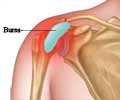Unlock the secrets to easing shoulder tension caused by stress, poor posture, and overuse. Dive into expert tips for relief and posture improvement.
- Stress and poor posture are primary culprits behind shoulder tension and pain
- Regular stretching, yoga, and stress management can prevent and alleviate tight shoulders
- Combatting hunchback and maintaining shoulder vitality require mindful posture and targeted exercises
Link Between Stress and Shoulder Tension
When you are stressed or anxious, your muscles contract, sometimes forcefully. It is a reflex or automatic reaction and is a stress response or 'fight or flight' response.Constantly elevated or clenched shoulders may also be a sign of chronic pain caused by diseases or overexertion. To alleviate shoulder tension and improve overall well-being, it is critical to address the underlying causes, and seeking appropriate medical or therapeutic intervention is essential (1✔ ✔Trusted Source
Psychosocial work stress, leisure time physical exercise and the risk of chronic pain in the neck/shoulders: Longitudinal data from the Norwegian HUNT Study
Go to source).
Tips for Relief from Shoulder Pain
Stretching and yoga, as well as stress management practices, can help to ease and prevent tight shoulders. It is critical to stretch your shoulders regularly because it helps loosen and strengthen the shoulder muscles. Releasing tension in your body can also improve your overall feelings of wellness.Muscle stress can be avoided with regular exercise, which includes neck and shoulder strengthening and stretching. It is important to keep your back straight while standing and sitting since a neutral spine position helps reduce stress on your neck and shoulders.
Combatting Hunchback: Power of Posture and Strategic Exercises
Hunchback occurs as a result of poor posture and muscular imbalances required to support the spine. Exercises that draw the shoulders back and help to counterbalance the slumped position are beneficial. Moreover, hand and arm exercises frequently stretch and strengthen the chest and shoulder muscles, which helps in balancing out the muscle tightness and weakness that often accompany a tightened shoulder.Role of Movement and Mindful Posture in Reducing Shoulder Stiffness
Be active and participate in activities that require the use of your shoulders. Stay as active as possible and avoid sedentary lifestyles. Make an effort to maintain good posture and optimal body alignment. As you go about your regular activities, pay attention to your body. If you sit for long periods, change your position frequently and get up for a short break every 30 minutes.Workplace ergonomic modifications, such as adjusting the height of the chair, monitor, and keyboard, can encourage proper posture and reduce shoulder strain. Also, try to lower your stress levels. However, it is always advisable to consult a trained physiotherapist who can provide workouts that are more appropriate to your physique and eating habits that can produce more permanent benefits.
Reference:
- Psychosocial work stress, leisure time physical exercise and the risk of chronic pain in the neck/shoulders: Longitudinal data from the Norwegian HUNT Study - (https://pubmed.ncbi.nlm.nih.gov/27443755/)
Source-Medindia
















